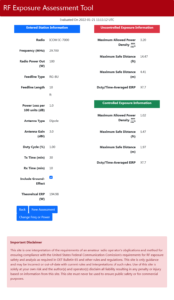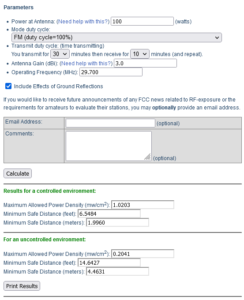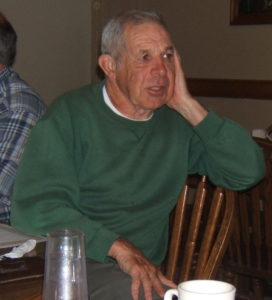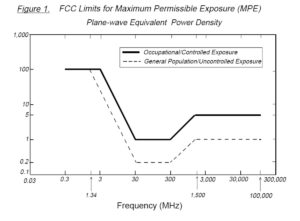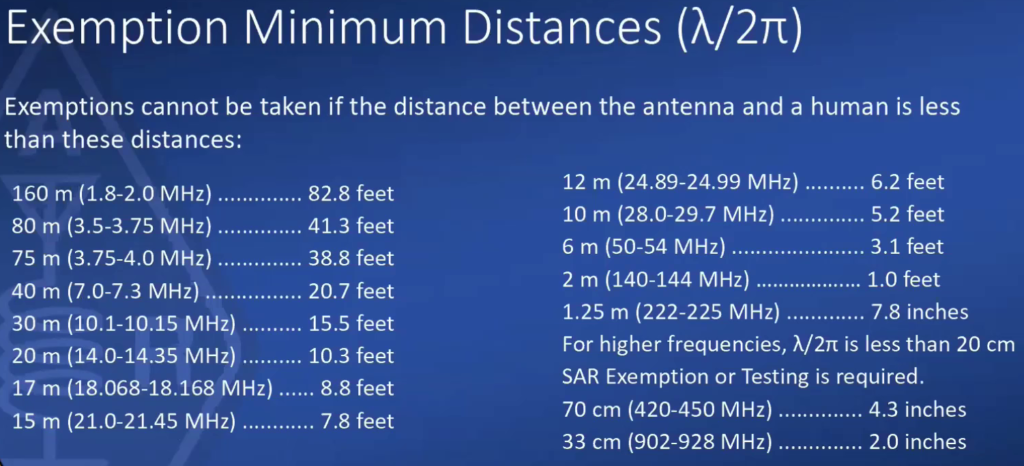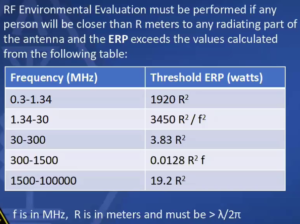One of the responsibilities of the Technical Coordinator in the Ohio Section is to submit something for the Section Journal. The Section Journal covers Amateur Radio related things happening in and around the ARRL Ohio Section. It is published by the Section Manager Tom – WB8LCD and articles are submitted by cabinet members.
Once my article is published in the Journal, I will also make it available on my site with a link to the published edition.
You can receive the Journal and other Ohio Section news by joining the mailing list Tom has setup. You do not need to be a member of the ARRL, Ohio Section, or even a ham to join the mailing list. Please sign up!
If you are an ARRL member and reside in the Ohio Section, update your mailing preferences to receive Ohio Section news in your inbox. Those residing outside the Ohio section will need to use the mailing list link above. Updating your ARRL profile will deliver news from the section where you reside (if the leadership chooses to use this method).
- Go to www.arrl.org and click the Login button.
- Login
- When logged in successfully, it will say “Hello <Name>” in place of the Login button where <Name> is your name. Click your Name. This will take you to the “My Account” page.
- On the left hand side, under the “Communication” heading (second from the bottom), click Opt In/Out
- To the right of the “Opt In/Out” heading, click Edit
- Check the box next to “Division and Section News.” If it is already checked, you are already receiving the Ohio Section Journal.
- Click Save
- There should now be a green check mark next to “Division and Section News.” You’re all set!
Now without further ado…
Read the full edition at:
THE TECHNICAL COORDINATOR
Jeff Kopcak – TC
k8jtk@arrl.net
Time is running out! No, not on some great offer but to complete station evaluations – if you were grandfathered and still haven’t completed one. I’ve covered this topic previously describing two different ways and methodologies for tackling this requirement. First using the exemption formula and math, second demonstrating online calculators and “worst case scenarios.” This time I’ll use available data for my station.
Remember:
- Any station built or modified (change in power, antenna, operating band/s, moving the antenna, changing the antenna, etc.) requires an evaluation to be performed at that time
- Stations built before May 3, 2021 (and not modified) have until May 2023 to perform an evaluation
- FCC exposure rules haven’t changed
- Hams are no longer categorically excluded from performing evaluations
- Nothing is submitted to the FCC. Calculations only need to be available when a station inspection is performed.
- Calculations for HTs are the responsibility of the manufacturer
A guided walkthrough calculator created by our own Technical Specialist Jason – N8EI is available on his site. The ARRL provides an online RF Exposure Calculator with detailed instructions. A Station Evaluation Worksheet is an alternative option to taking screenshots and printing online calculator results.
Information needed:
- Power at Antenna:
- Determined by coax length, type of feedline, loss per 100 feet, and power into the line. Power out of the radio, less feedline loss, before antenna gain.
- A Coax Cable Loss Calculator can help answer this question (same one on the ARRL instruction page)
- Mode duty cycle: while transmitting
- FM, AM, RTTY, AFSK, FSK, etc. are 100% (on all the time)
- SSB and CW are typically less than 50%
- Transmit duty cycle: time transmitting vs receiving
- Example: typically transmit for 3 minutes, then listen for 5
- Might have to time some conversations or do rough estimation. Modes like FT8, JT65, JT9, etc. are timed with defined TX/RX windows.
- SSB is likely to be a fraction of the time transmitting as more time is spent listening (or hams should spend more time listening, LoL).
- Antenna Gain:
- Use the gain rating in dBi from the manufacturer
- Gain in dBi = gain in dBd + 2.15 dB
- Gain in dBd = gain in dBi – 2.15 dB
- Or round up to 2.2 dB for easier calculations
- When the manufacturer lists gain in dB, it can generally be assumed this is dBd
- Check the Antenna Gain Instructions for typical examples of antennas and gain
- Operating Frequency: frequencies transmitted
- Controlled/uncontrolled:
- Controlled assumes the ham and their family know about radiation and the ham has informed family members to use caution
- Uncontrolled is any unknowing person passing by an antenna installation
- Uncontrolled provides a greater amount of safe distance between humans and antennas
On to my station…
Antenna #1 – HF: G5RV antenna, digital operations
- Coax attenuation per 100/ft:
- 0.3dB @ 5MHz
- 0.6dB @ 10MHz
- 1.0dB @ 30MHz
- 1.3dB @ 50MHz
- 2.2dB @ 144MHz
- 4.5dB @ 400MHz
- Using the Coax Cable Loss Calculator:
- dB Loss Of Cable Per 100 Ft. At The Desired Operating Frequency. In HF calculations, I used the lesser loss value which slightly increases the safe distance in my calculations. Example: calculating 7 MHz, used 5 MHz rating of 0.3 dB.
- Length of Cable in Feet: 144
- Power into Cable in Watts (out of the radio): 40
- Gain of Antenna in dBd is not important here as it’s used to calculate antenna ERP and not needed
- Result: Power out of Cable in Watts, rounded
- Using the RF Exposure Calculator:
- Power at Antenna, from the coax cable loss calculator
- Mode duty cycle: digital or FM, 100%. Another mode is SSB but it will have a lower mode duty cycle.
- Transmit duty cycle: 1 min transmit / 1 min receive – duty cycle for FT8, mode I operate most of the time
- Antenna Gain (dBi): gain instructions page indicates a G5RV type antenna has 1.0dBi however, 20M is rated at 6.0dB. dBi = dB + 2.2.
- Operating Frequency (MHz): frequencies operated listed in MHz, rounded to the nearest MHz
- Results: un/controlled minimum safe distance in feet, rounded
Antenna #2 & 3 – UHF/VHF: omni antenna, FM operations
- Coax attenuation per 100/ft: same as above
- Using the Coax Cable Loss Calculator:
- dB Loss Of Cable Per 100 Ft. At The Desired Operating Frequency
- Length of Cable in Feet: 30
- Power into Cable in Watts (out of the radio): 50
- Gain of Antenna in dBd is not important here as it’s used to calculate antenna ERP and not needed
- Result: Power out of Cable in Watts, rounded
- Using the RF Exposure Calculator:
- Power at Antenna, from the coax cable loss calculator
- Mode duty cycle: FM, 100%
- Transmit duty cycle: 1 min transmit / 2 min receive – I would say worst-case for a rag chew net
- Antenna Gain (dBi): antenna specifications rate the antenna as 3.0dBi
- Operating Frequency (MHz): frequencies operated listed in MHz, rounded to the nearest MHz
- Results: un/controlled minimum safe distance in feet, rounded
| Antenna | Power at Antenna (watts) | Mode duty cycle | Transmit duty cycle (TX/RX minutes) | Antenna Gain (dBi) | Operating Frequency (MHz) | Uncontrolled environment – Minimum Safe Distance (feet) |
| #1 – HF: G5RV | 26 | 100% | 1/1 | 3.2 | 53 | 5.5 |
| #1 – HF: G5RV | 33 | 100% | 1/1 | 3.2 | 28 | 5.7 |
| #1 – HF: G5RV | 33 | 100% | 1/1 | 3.2 | 24 | 4.9 |
| #1 – HF: G5RV | 33 | 100% | 1/1 | 3.2 | 21 | 4.3 |
| #1 – HF: G5RV | 33 | 100% | 1/1 | 3.2 | 18 | 3.7 |
| #1 – HF: G5RV | 33 | 100% | 1/1 | 8.2 | 14 | 5.1 |
| #1 – HF: G5RV | 36 | 100% | 1/1 | 3.2 | 7 | 1.5 |
| #1 – HF: G5RV | 36 | 100% | 1/1 | 3.2 | 3.5 | 0.7 |
| #2 – UHF/VHF: dual band | 43 | 100% | 1/2 | 3.0 | 148 | 5.6 |
| #2 – UHF/VHF: dual band | 37 | 100% | 1/2 | 3.0 | 450 | 4.2 |
| #3 – UHF/VHF: dual band | 43 | 100% | 1/2 | 3.0 | 148 | 5.6 |
| #3 – UHF/VHF: dual band | 37 | 100% | 1/2 | 3.0 | 450 | 4.2 |
Each compliant antenna/band combination is marked green, meaning actual distance exceeds the minimum safe distance for an uncontrolled environment in that situation. Overall rating: station is compliant.
It’s fairly easy to complete an evaluation following the detailed instructions and walkthroughs. The most time consuming for my shack was looking up antenna and coax specifications. I had documented coax lengths when setting up the shack.
Thanks for reading and 73… de Jeff – K8JTK

